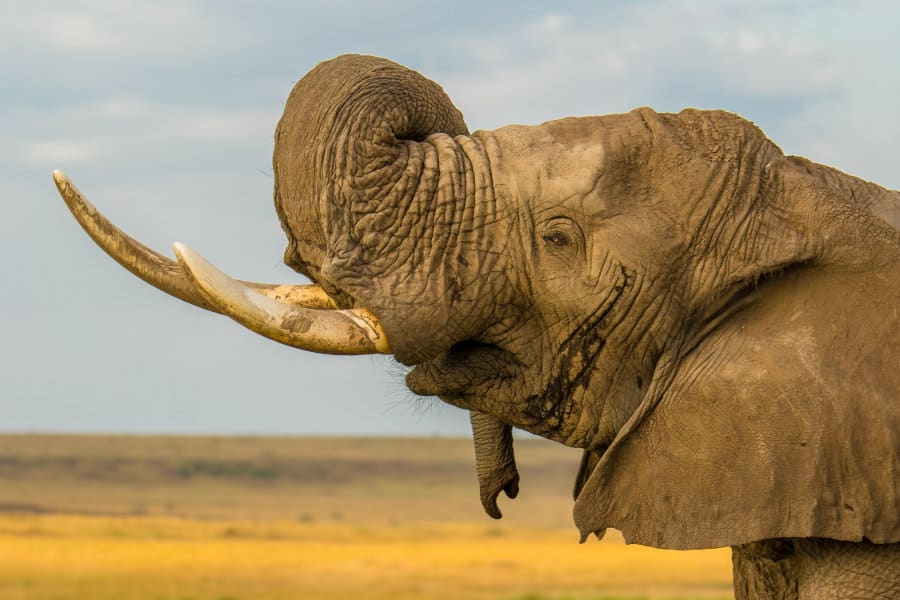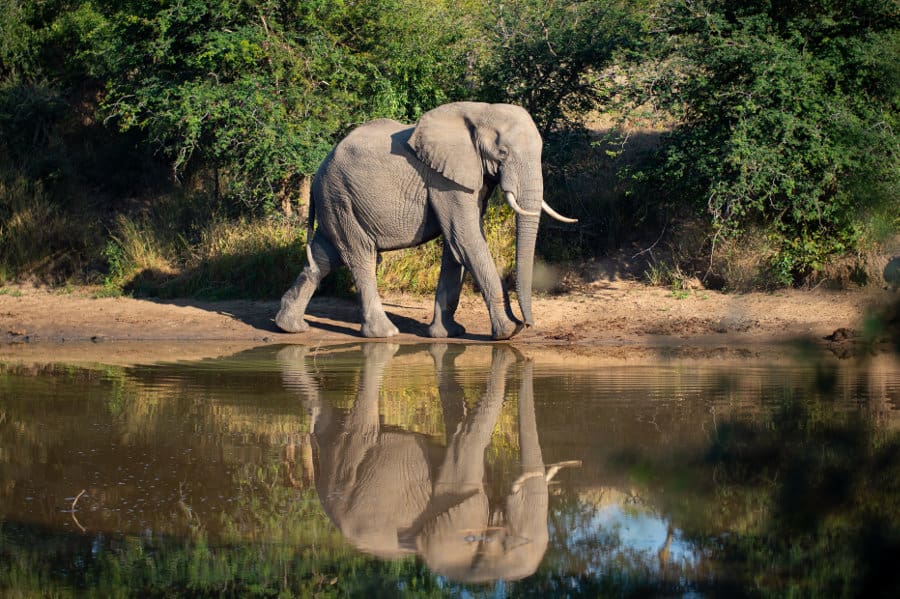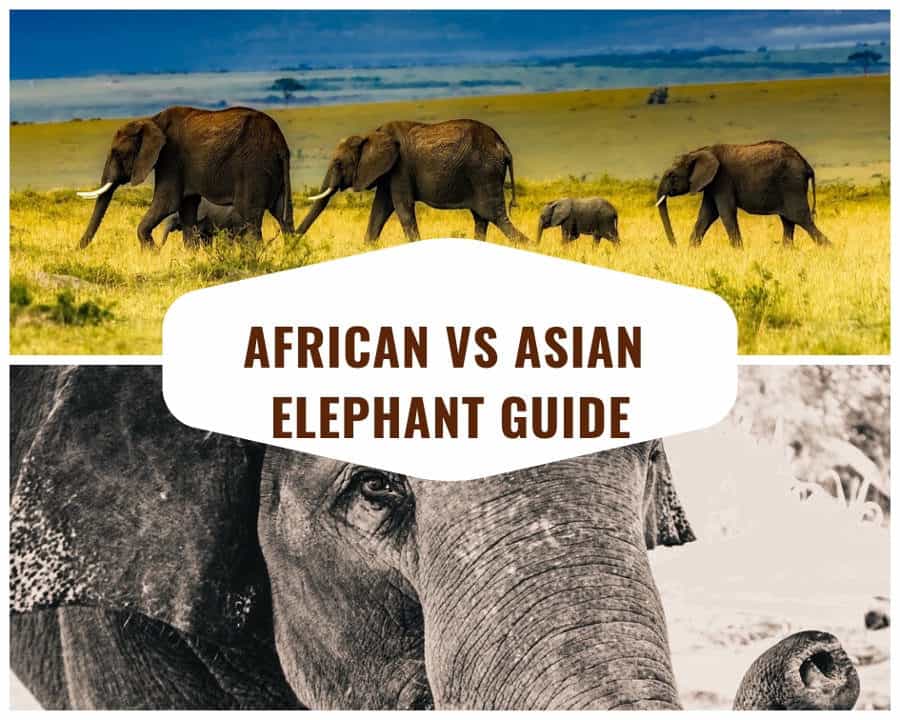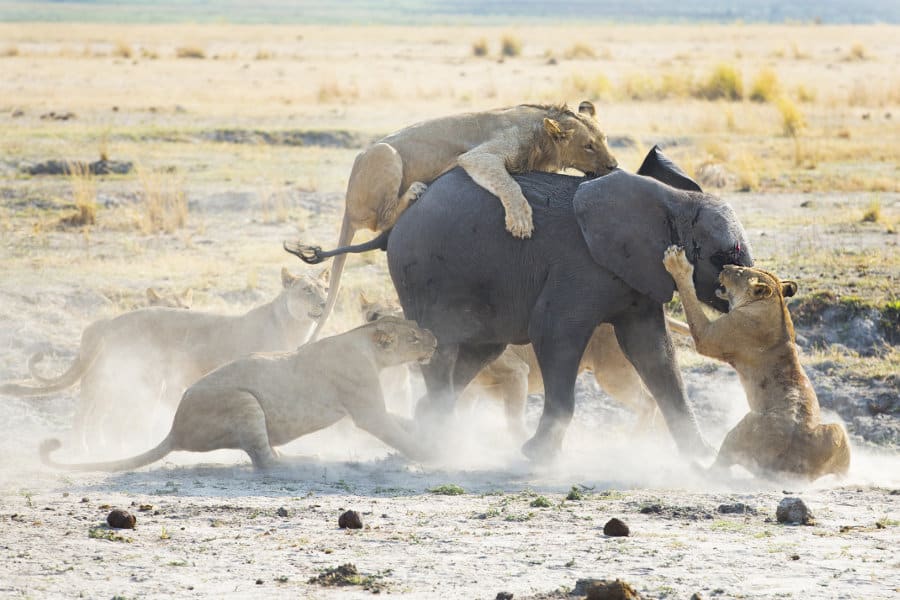What do you think of when you hear the word “elephant”? For many people, it’s an image of a gentle giant strolling the savanna. A life-changing sighting while on safari.
It’s true that elephants are intelligent, social creatures with their own distinct culture. But, like any wild animal, they’re prone to their “off days,” when they become aggressive and unpredictable. And a temper tantrum from a bull elephant is nothing to scoff at.
Throw mating rights into the mix, and the world’s largest land animal becomes an even scarier prospect.
What causes some male elephants to snap? The answer may lie in a mysterious condition called “musth.”
What is Musth?
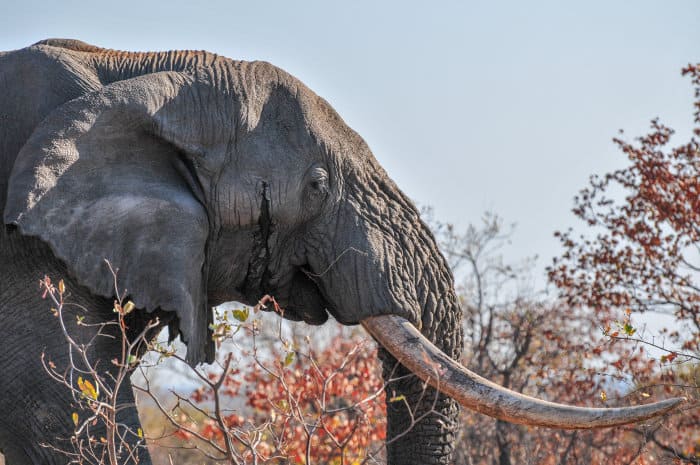
Musth is a periodic condition that affects bull elephants. It causes heightened aggression and a surge in reproductive hormones. During this period, testosterone can increase to over 100 times normal levels. A sticky substance called temporin is also secreted from the sides of the elephant’s head.
The condition is thought to be linked to sexual arousal and reproductive dominance. Bulls in musth attract cows in heat. Non-receptive females and juvenile males, however, give the hormonal herbivores a wide berth.
Musth occurs in both Asian and African elephants. We’re focusing on the African species here. In particular, the African bush elephant.
When does musth occur?
Bull elephants usually start to experience musth at around age 25-30. During their teen years, they start to move away from their family groups and live a more solitary life. Sometimes, they’ll form “bachelor herds” with other males.
At first, musth may only last a matter of days or weeks. As the male gets older, the duration of musth increases; after the age of 40 or so it can last 2-4 months. Not all bulls enter musth at the same time of year.
What’s the benefit of musth?
Musth is a way for male elephants to signal their sexual health and maturity, and social rank. More virile and aggressive bulls get more mating opportunities, so it’s evolutionarily beneficial.
There’s a kind of dominance hierarchy in male elephant society, whether it’s over mates, food, or water. They’ll sometimes come to blows over potential mates. Usually, though, the smaller, younger male will give way.
When the dominant bulls chase off or threaten fellow males, this can even cause the submissive males’ musth to be suppressed.
How to Identify Elephants in Musth

An ominous rumble. A trickle of fluid.
These are signs game wardens and safari guides know all too well, and it means being even more vigilant than usual. After all, African elephants in musth have been known to attack fellow animals and humans alike.
The tell-tale sign is a trickle of temporin down the side of the face. This is a thick, tar-like secretion that comes from the temporal ducts.
A male will also produce a steady stream of pungent urine that dribbles down his legs and wafts on the wind, notifying females to his presence. (And warning everyone else to give him a wide berth.)
To top things off, bulls produce a low, rumbling noise that females in heat respond to with vocalizations of their own.
Green penis syndrome?
No, it’s not something that happens when Bruce Banner transforms into the Hulk. (Although I guess it’s also relating to “smashing”.) 🙂
It’s another side-effect of musth in male elephants, and it’s exactly what the name suggests. The constant dribble of urine will stain the male’s penis and give it a distinctive green appearance.
This might be cause for booking a doctor’s appointment in human males, but female elephants apparently can’t get enough of it.
Why Do Males in Musth Become More Aggressive?

It’s no secret that testosterone is linked to increased libido and sexual dominance. It’s plausible that the males’ elevated hormones could lead to their aggressive behaviour.
There may be another explanation for their aggression, though.
During musth, a male elephant’s temporal glands swell up significantly, putting pressure on his eyes. The acute pain has been compared to a severe toothache.
At the same time, the tar-like temporin also drips into his mouth, which can’t be too pleasant.
No wonder these bulls tend to lash out.
Wild Elephants in Musth
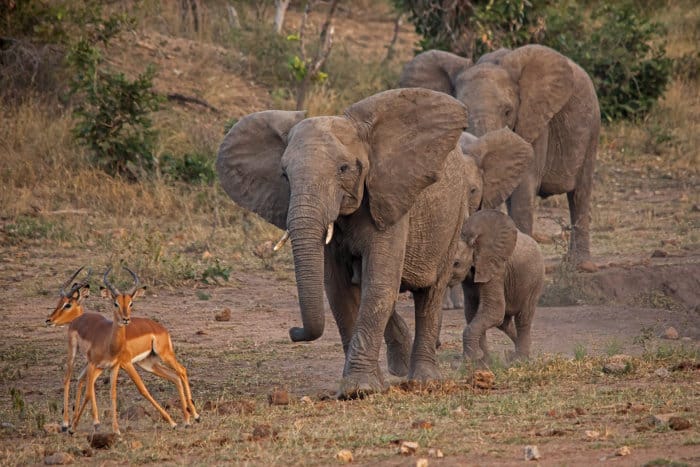
African elephants share the savanna with a host of predators. While a few African animals can tackle small females or calves, a grown male in musth is off the menu. Predators would have to be mad to take on the massive mammal.
In fact, any animal is in danger if they come too close. That includes fellow herbivores who don’t even pose a threat.
They’ve been known to gore buffalo, chase off giraffes, and even flip an unfortunate hippo or two.
Attacks on rhinos

One of the African elephant’s favourite targets is the rhino. Both black and white rhinos have been attacked and killed, but white rhinos seem to be the elephant’s preferred victims.
In two locations, rhino slaughter reached epidemic proportions. For whatever reason, the horny young herbivores objected to a different kind of “horny” herbivore on their turf.
Problems in Pilanesberg
Between 1992 and 1997, a group of orphaned young male elephants in musth killed over 40 white rhinos in Pilanesberg National Park, South Africa.
The killings were unusual, not just because of their frequency, but because the elephants were entering sexual maturity much earlier than usual. Bulls displayed signs of musth during their teenage years.
Musth also lasted much longer than usual. Some males stayed in this state for up to five months at a time.
Trouble in Hluhluwe-Umfolozi Park
At the same time, rhino killings were also occurring in Hluhluwe-Umfolozi Park, South Africa. Between 1991 and 2001, 58 white rhinos and 5 black rhinos were killed by elephants. Young males in musth were also the prime suspects.
Keeping the youngsters in check
The way these situations were resolved was the same – the parks brought in older males to try and suppress aggression in the adolescent bulls.
In Pilanesberg, six older male elephants were brought in from Kruger National Park. The killings immediately stopped, and musth duration declined significantly in the young males.
Seeing the effectiveness of this method, a similar tactic was employed in Hluhluwe-Umfolozi Park, which was also a success.
Attacks on Humans
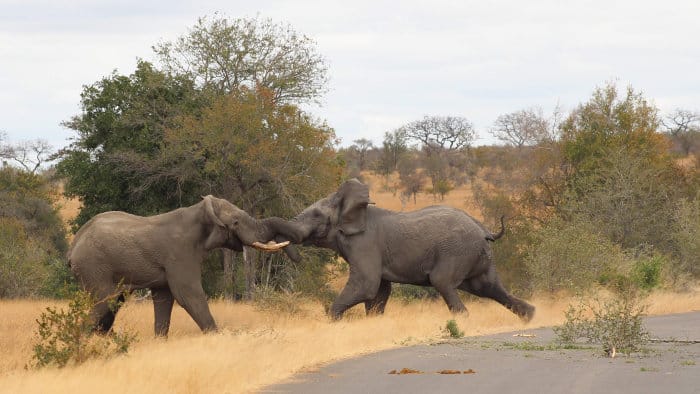
There are many historical accounts of “rogue” elephants rampaging through villages. It’s likely that many of these attacks were carried out by bull elephants in musth.
Every year, there are a handful of fatal attacks on locals by African elephants, but these pale in comparison to the number of elephants killed by humans.
Even on safari, there are occasional attacks. Bull elephants will mock charge, chase (or flip) vehicles, and even throw branches at tourists.
As long as you’re sensible, it’s very unlikely you’ll be involved in a serious elephant attack. But these animals should be treated with caution and enjoyed from a safe distance.
Captive Elephants in Musth
If you’ve seen an elephant at the zoo recently, chances are it was female. Keeping bull elephants in captivity is more expensive, more complicated, and more dangerous.
Zoos need a lot of additional safety measures and precautions if they’re going to keep male elephants in musth. Even the most placid individuals have been known to turn extremely aggressive. That means direct contact with the keepers is fraught with risk.
If a male is in musth, he’s isolated in a purpose-built enclosure.
Human Impact on Musth

In a way, many of the cases of “problem” elephants in musth are our own fault. Poaching has decimated African elephant numbers, and it’s the biggest males with the largest tusks who are prized.
We know elephants are smart, social animals. Maybe they’re a bit more like us than we thought. It seems they also need strong, male role models to help them become productive members of society.
Having killed many large, dominant males, we’ve seen the impact this can have. Young males grow up with no one to keep them in line. This leads to situations like Pilanesberg and Hluhluwe-Umfolozi Park.
Humans encroaching on elephant habitat has also increased the number of negative interactions. Bull elephants need large spaces to roam and large amounts of vegetation to survive.
It’s likely that some attacks blamed on musth are actually retaliatory attacks on humans. Elephants are intelligent enough to mourn lost family members and remember who caused their death.
Musth – a Natural Part of Elephant Life

Ultimately, musth is a natural phenomenon that shouldn’t be vilified. Bull elephants have complex social lives, learn from older males, and enjoy recreation.
Occasional aggression is common in many species, especially over resources and mating. It’s just, with the largest land animal in the world, the results of that aggression can be more significant!
Like any wild animal, African elephants should be treated with respect. In the right hands, the danger can be minimized.
If you’re planning on seeing these majestic creatures in their natural habitat, make sure you do your research. Choose the right safari specialists, and you could have a magical wildlife spotting experience with these enigmatic animals.
